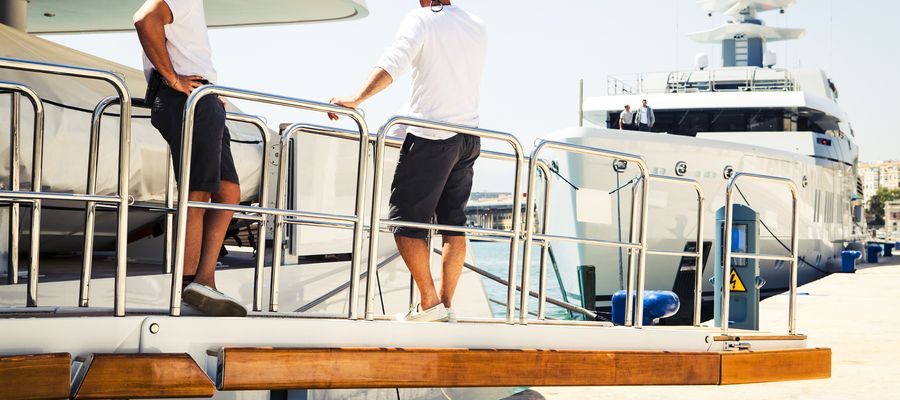Working in the yachting industry has to be one of the most exciting careers out there however, finding a reliable yacht crew is not without its challenges.
Although turnover of staff is high, there is no shortage of competition for jobs and as captains regularly look at CVs it is easy to get lost in the crowd. After all, it’s not enough to be the best candidate for the position, your CV must highlight the fact.
Captains look for a combination of experience, certifications and personality when recruiting and in addition those skills that give a candidate the edge.
So, what should you include in your cv to make it stand out on the captain’s desk?
You have between three and six seconds to catch the captain’s attention so it is essential to take care with the details. Your CV is your best marketing tool, so typos and grammatical errors are always a no no, remember yachting is all about attention to detail and your CV needs to reflect this. It is best to have a maximum of two pages to stand the best chance of landing the job.
Yachts do hire people with no previous experience in yachting. These entry-level positions offer new crew the best opportunity to learn the ropes and are highly prized. However, the key to securing your first position is identifying what transferable skills you have that would be useful on a yacht and highlighting them on your CV.
Professional hospitality experience and training, for example at a hotel, resort, cruise ship, estate or restaurant, is a real advantage when starting a career in yachting. Plus, holding specialty skills is also a means to enter the industry, such as masseuse, personal training, nursing, chefing, childcare experience, fishing guide, engineer, kite surfing or diving instructor and even pilot.
Studies show that people often scan pages diagonally, with this in mind, make sure you include your most recent employment and qualifications first and move your most impressive skills and attributes to the top of the list.
Don’t use a fancy font to stand out, it is best to use a classic font that is professional, aesthetically pleasing and easy to read. Use subheadings and bold fonts to highlight and to keep things organised.
It is essential to include the following information:
In the first section:
Full name
A current and professional looking photograph. This must be included as it is an industry standard. Remember, a smart appearance is extremely important on board; make sure you look well groomed, cover any tattoos and remove
any piercings
A current mobile number, location and email address
Nationality
Details of any visas that you may currently hold with expiration dates
Marital status
Details of smoking habits, visible tattoos and piercings
Next, you should include:
A concise profile paragraph summarising your experience and unique selling points as you may just hold the skill that a captain needs to supplement their crew.
Your yacht crew experience, including employment dates, yacht name and size and the position held with a list of duties, listed in reverse date order with the most recent first. Captains want to build a comprehensive picture of who you are and how versatile you are. Gaps in CVs will also need to be explained.
Your additional qualifications and relevant work experience, again listed in reverse date order. Don’t disregard job experiences, paid or volunteer, skills or education credentials whether relevant or seemingly irrelevant to yachting.
Your hobbies and interests. These can illustrate character and work ethic and could be a skill that the captain is looking for such as water sports, fishing, learning a language, diving, woodworking, flower arranging or even playing the piano.
References - It's always useful to include a few professional references, with prior permission, if possible.
It’s then time to proofread and gain feedback, ideally from someone in the industry.
It’s also vital to ‘clean’ up your social media accounts before you apply, removing any negative comments or inappropriate photographs or switch to ‘private’.
It’s also a good idea to update your LinkedIn profile in line with your latest crew CV. You are given more space, so you can to expand a little more and you can ask previous employers to endorse you on LinkedIn.
Related Articles


